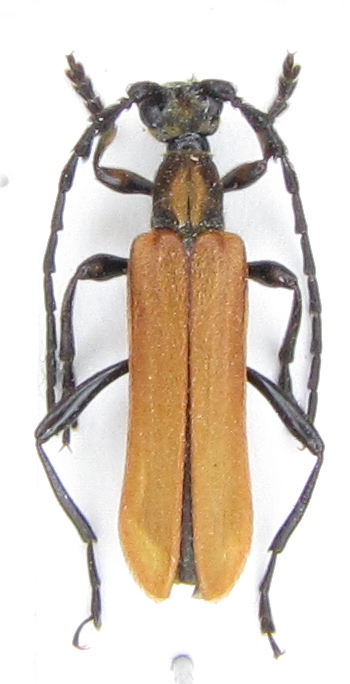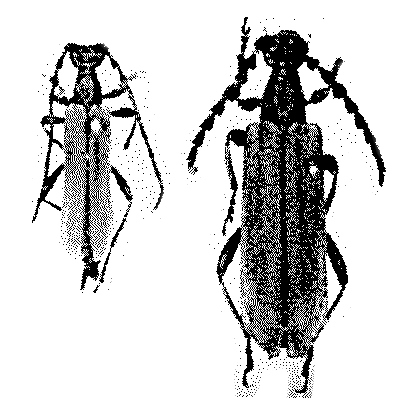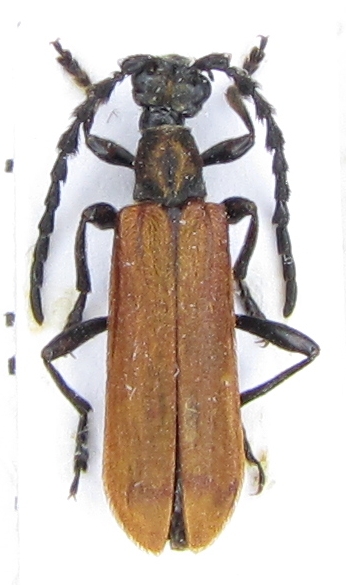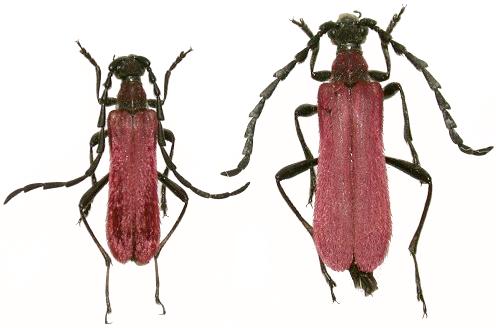| T O P I C R E V I E W |
| Vitali |
Posted - 12/04/2011 : 23:39:06

I first thought it was Corennys taiwana.
Two of the three specimens I possess have red markings before the tips of all femora. But one has no red spots on hind femora, and also in contrast to the Hayashi's description the base of elytra is not brownish, yellow pubescence is hardly noticeable in ventral side of the body, but distinct in ventral side of femora. |
| 10 L A T E S T R E P L I E S (Newest First) |
| Vitali |
Posted - 14/04/2011 : 10:31:55
Well, the ring has closed on C. taiwana. Yes, I read the Hayashi's paper before placing the question, but I was not sure, as some features didn't fit the description.
Thank you a lot Carlo, Francesco and Tomas. |
| Francesco |
Posted - 14/04/2011 : 07:25:52

Definitively, your previous exemplar was a male!
Ok, Tomas (and Hayashi) is right and I was wrong: they are, though not completely fitting, two Corennys.
At the side, the taiwana-types from the original description (Hayashi, 1963) |
| Vitali |
Posted - 13/04/2011 : 23:36:11

Maybe I should have placed a photo of a pair at once. This is another specimen from the same series... in addition to the discussion about antennae and tarsi.
Sorry for the dust, I tried not to miss the discussion in its high point. |
| Francesco |
Posted - 13/04/2011 : 22:54:55

Dear Tomas, thank you for your message.
For a long time I have a picture of a pair of Formosopyrrhona, which can help in this comparison. It seems to me that Vitali's specimens (a female) belongs to an intermediary form between Formosopyrrhona and Corennys.
Head belongs to the former, prothorax to the latter, elytral surface to the former, elytral shape to the latter. Antennae are long as those of Formosopyrrhona.
The hind tarsi (shorter in females) are neither as short as those of Corennys nor as long as those of Formosopyrrhona. The male (with its long antennae) is more similar to a male of Formosopyrrhona than of Corennys..
I agree with you that this species is Corennys taiwana, but I am not completely sure that taiwana should be correctly inserted in this genus. |
| horshehden |
Posted - 13/04/2011 : 22:08:14
Sorry, you're not right. It is Corennys - check antenna, elytra, etc. Or, if you're still not sure, check hind tarsi of this specimen and compare it to Formosopyrrhona. You can also consult Ohbayashi & Niisato, 2009.
The specimen seems to be C. taiwana, which is rather "nontypical" genus member by body shape and elytra cover (comparing with species from Sech+Yun described by Holz.) |
| Vitali |
Posted - 13/04/2011 : 20:56:02
Amazing! I think you are right again. It is possible to find photos of 2 species: F. satoi and F. hozanensis. The habitus is very-very similar, especially what concerns pronotum shape and its pubescence. Also elytra have less pronounced ridges than in Corennys. The colour of my specimens is different from both F. satoi and F. hozanensis, but I am afraid such kind of colour may change in dead specimens. According to BioLib there are at least 3 species in Taiwan, F. hozanensis, F. semilaeticolor and F. taiwanensis |
| Francesco |
Posted - 13/04/2011 : 20:01:11
By consider the habitus of the Corennys-genotype, I think that your species belongs to the genus Formosopyrrhona, which has some Taiwanese species. |
| Carlo |
Posted - 13/04/2011 : 17:25:32
Corennys sanguinea is a very similar species but it has got totally black femura |
| Vitali |
Posted - 13/04/2011 : 14:05:23
Taiwan, naturally  |
| Francesco |
Posted - 13/04/2011 : 13:09:43
Where is this specimen coming from? |


